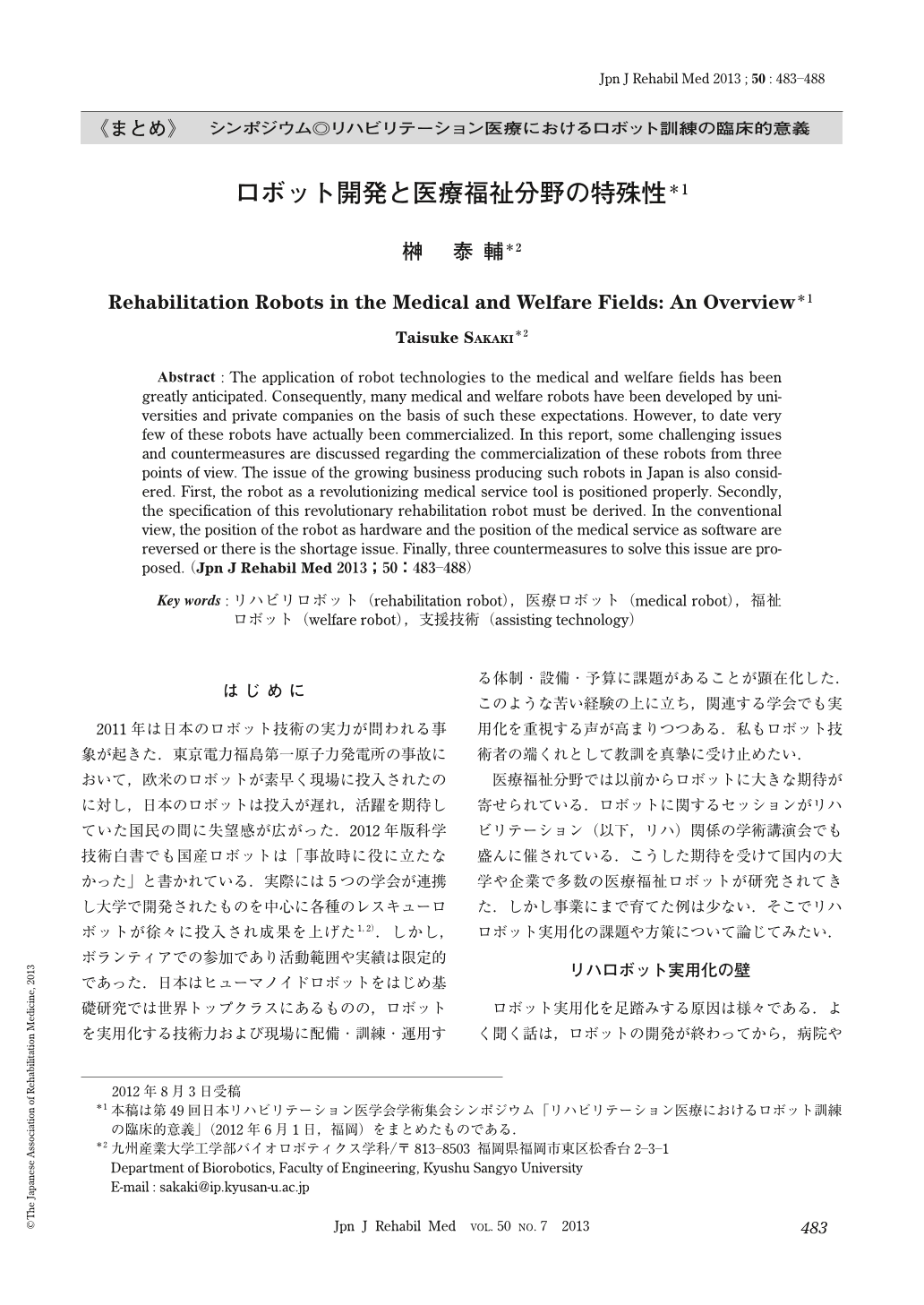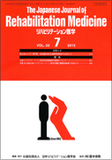Japanese
English
- 販売していません
- Abstract 文献概要
- 1ページ目 Look Inside
- 参考文献 Reference
はじめに
2011年は日本のロボット技術の実力が問われる事象が起きた.東京電力福島第一原子力発電所の事故において,欧米のロボットが素早く現場に投入されたのに対し,日本のロボットは投入が遅れ,活躍を期待していた国民の間に失望感が広がった.2012年版科学技術白書でも国産ロボットは「事故時に役に立たなかった」と書かれている.実際には5つの学会が連携し大学で開発されたものを中心に各種のレスキューロボットが徐々に投入され成果を上げた1,2).しかし,ボランティアでの参加であり活動範囲や実績は限定的であった.日本はヒューマノイドロボットをはじめ基礎研究では世界トップクラスにあるものの,ロボットを実用化する技術力および現場に配備・訓練・運用する体制・設備・予算に課題があることが顕在化した.このような苦い経験の上に立ち,関連する学会でも実用化を重視する声が高まりつつある.私もロボット技術者の端くれとして教訓を真摯に受け止めたい.
医療福祉分野では以前からロボットに大きな期待が寄せられている.ロボットに関するセッションがリハビリテーション(以下,リハ)関係の学術講演会でも盛んに催されている.こうした期待を受けて国内の大学や企業で多数の医療福祉ロボットが研究されてきた.しかし事業にまで育てた例は少ない.そこでリハロボット実用化の課題や方策について論じてみたい.
Abstract : The application of robot technologies to the medical and welfare fields has been greatly anticipated. Consequently, many medical and welfare robots have been developed by universities and private companies on the basis of such these expectations. However, to date very few of these robots have actually been commercialized. In this report, some challenging issues and countermeasures are discussed regarding the commercialization of these robots from three points of view. The issue of the growing business producing such robots in Japan is also considered. First, the robot as a revolutionizing medical service tool is positioned properly. Secondly, the specification of this revolutionary rehabilitation robot must be derived. In the conventional view, the position of the robot as hardware and the position of the medical service as software are reversed or there is the shortage issue. Finally, three countermeasures to solve this issue are proposed.

Copyright © 2013, The Japanese Association of Rehabilitation Medicine. All rights reserved.


